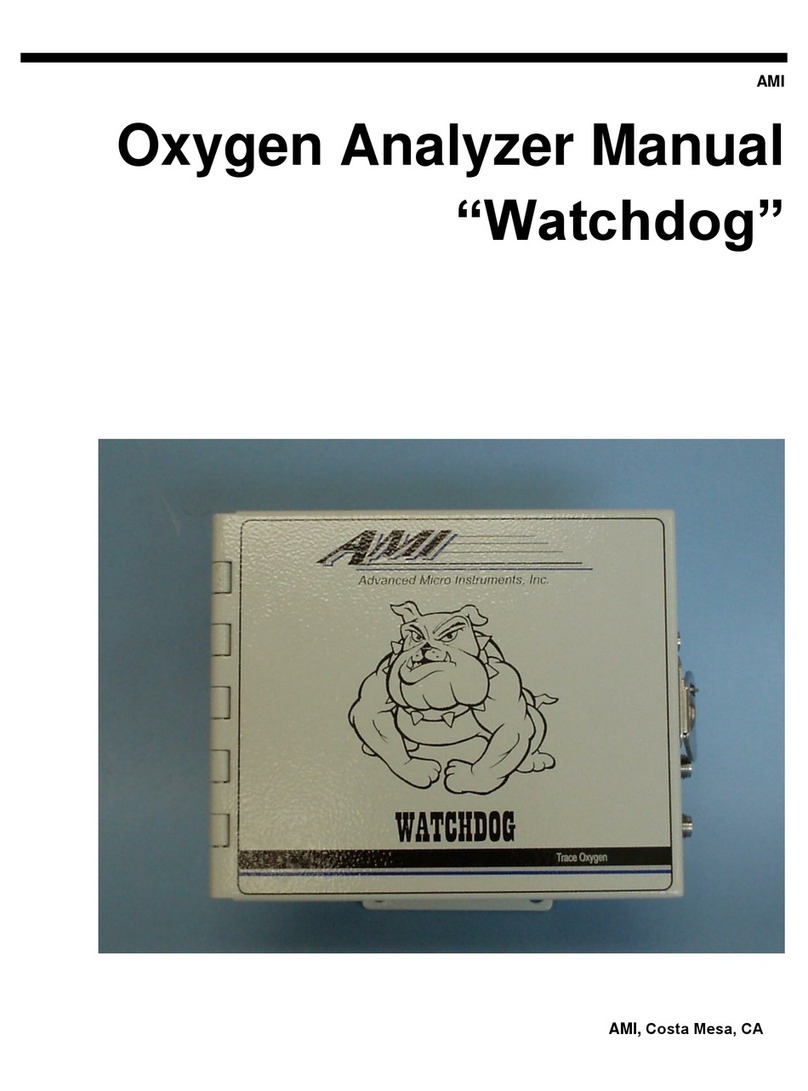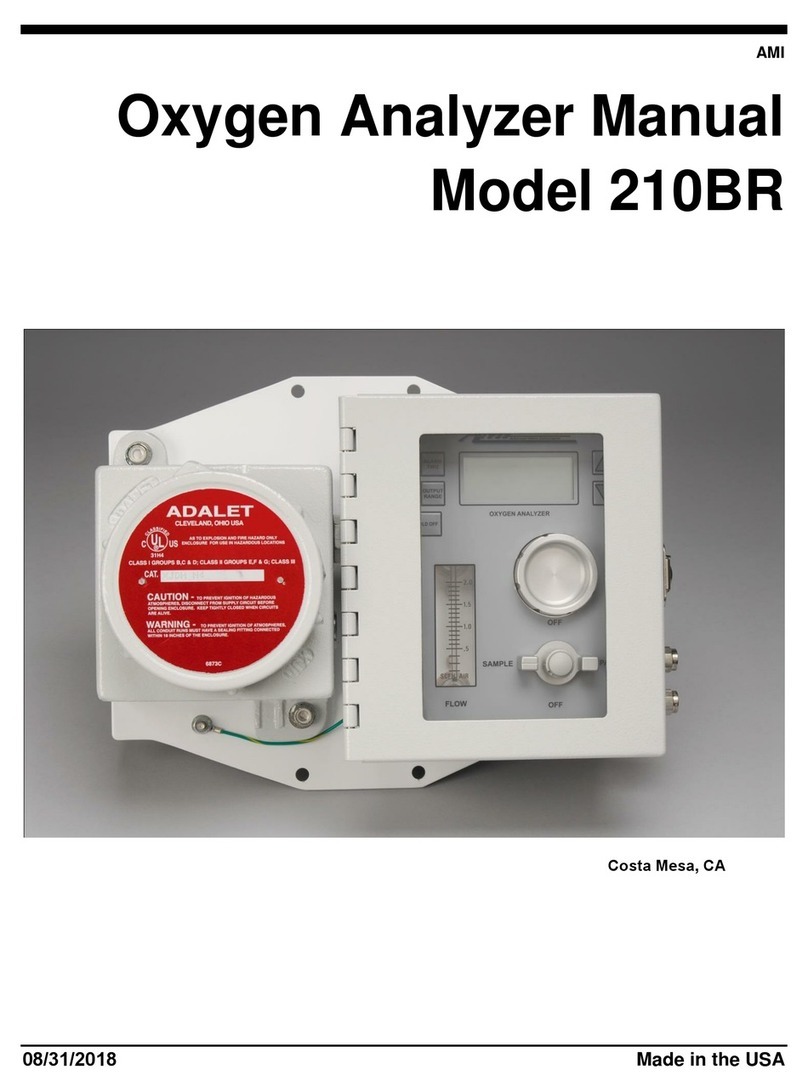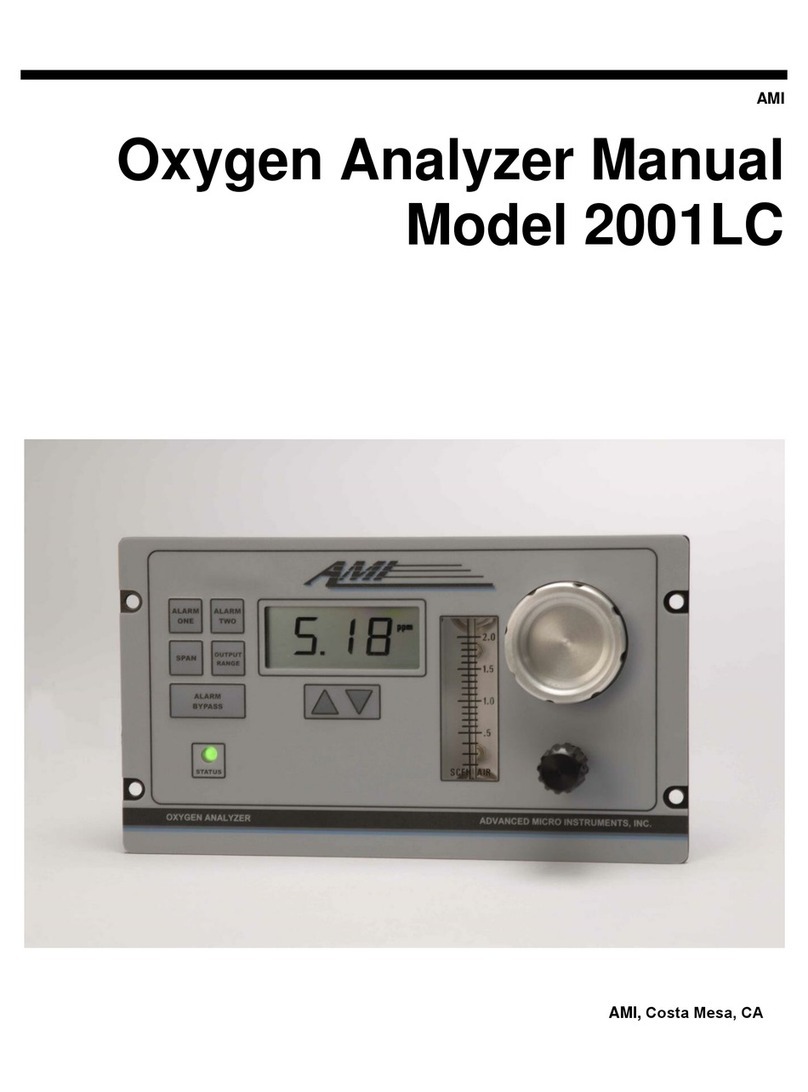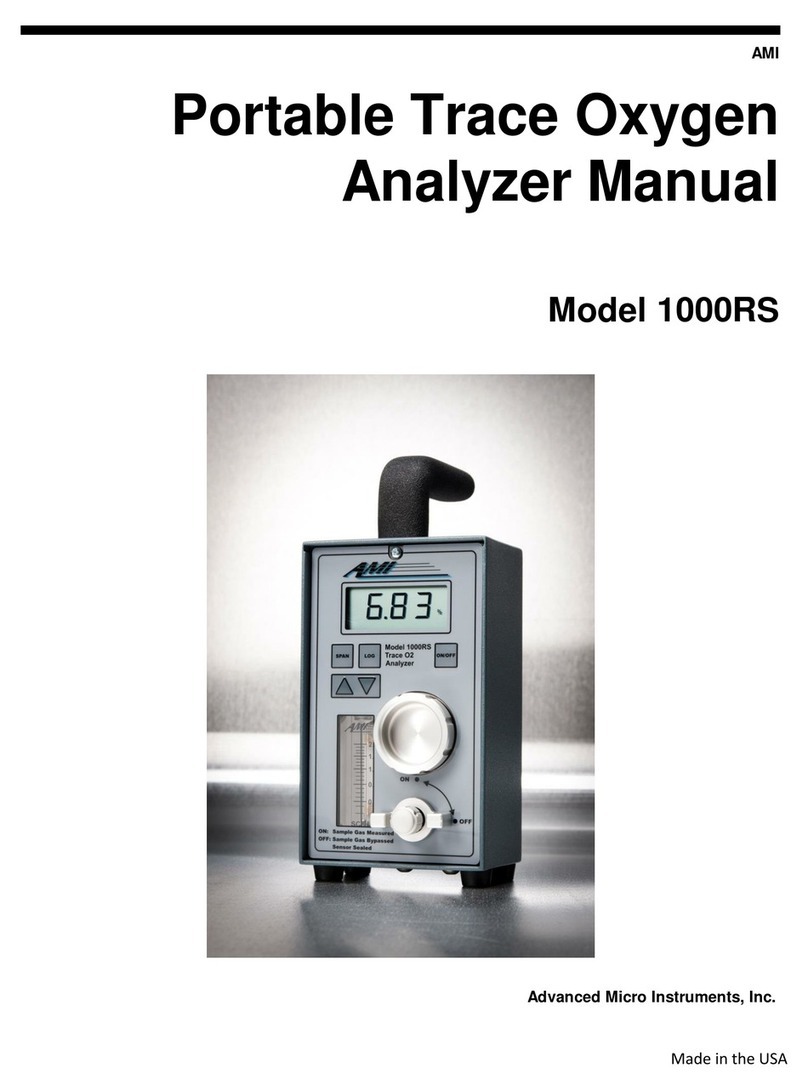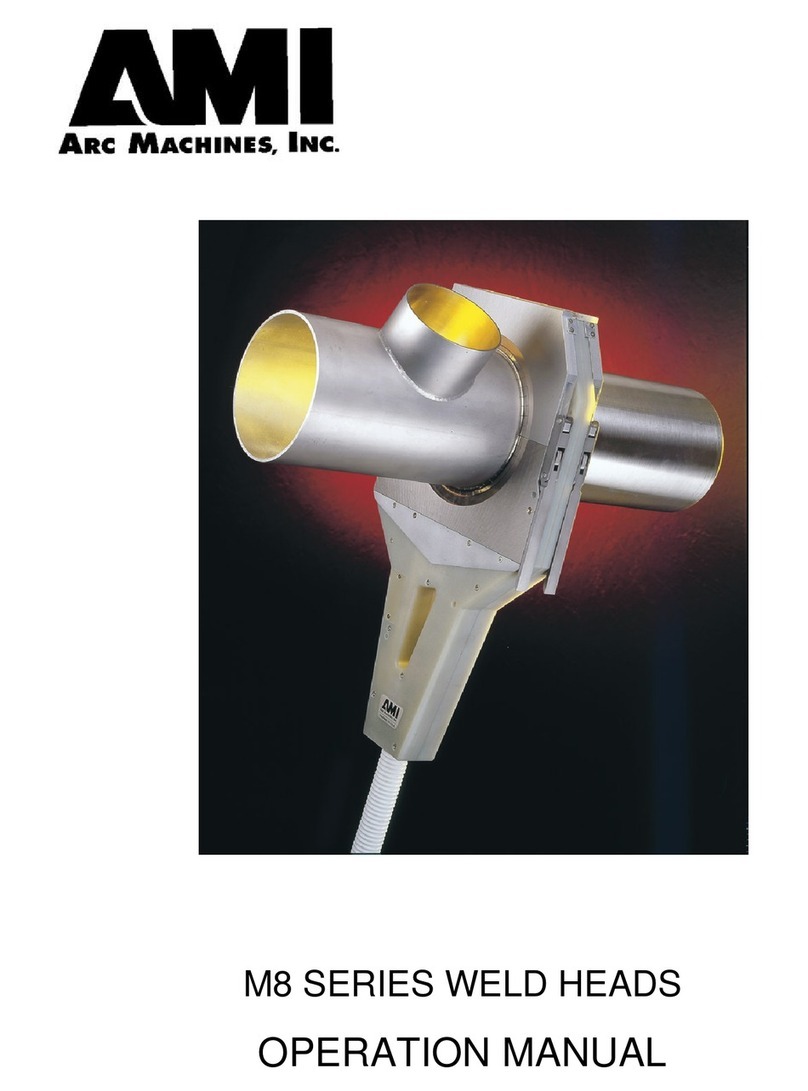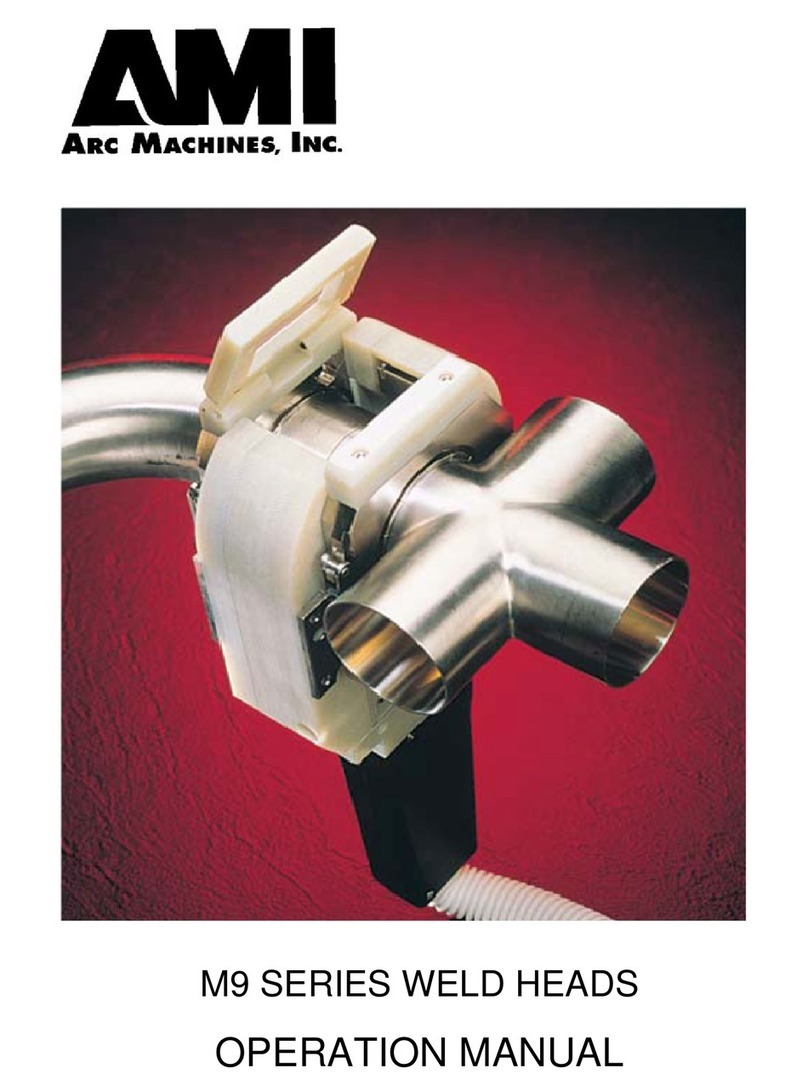
AMI Analyzer Manual Model 201LC Series Oxygen Analyzer •
••
•3
Oxygen sensor:
AMI manufactures its own electrochemical sensor. It measures the concentration of oxygen in a gas stream, using an
oxygen specific chemistry. It generates an output current in proportion to the amount of oxygen present, and has zero
output in the absence of oxygen, thus avoiding any requirement to zero the analyzer. The cell is linear throughout its
range. The span calibration may be performed using standard span gases or ambient air. Unlike competitive sensors,
the AMI sensor is made using a high capacity metallic body that provides long life with about twice the active
ingredients of conventional sensors, but without compromised come-down time.
Sensor Warranty:
The sensor is warranted to operate for a period determined by its class. If the sensor ceases to operate correctly before
this time has elapsed, contact AMI for a return authorization for evaluation. If there is any evidence of defective
material or workmanship the sensor will be replaced free of charge.
NOTE: Any evidence of abuse or physical damage, such as a torn membrane, will void the warranty.
Instrument Warranty:
Any failure of material or workmanship will be repaired free of charge for a period of two years from the original
purchase (shipping date) of the instrument. AMI will also pay for one way shipment (back to the user).
This warranty does not cover the sensor, which is covered by its own warranty (see above).
Any indication of abuse or tampering will void the warranty.






